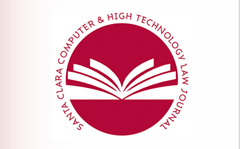Abstract
In an influential 1996 article entitled Cyberspace and the Law of the Horse, Judge Frank Easterbrook mocked cyberlaw as a subject lacking in cohesion and therefore unworthy of inclusion in the law school curriculum. Responses to Easterbrook, most notably that of Lawrence Lessig in his 1999 article The Law of the Horse: What Cyberlaw Might Teach, have taken a theoretical approach. However, this Article—also appropriating the “Law of the Horse” moniker—concludes that Easterbrook’s challenge is primarily pedagogical, requiring a response keyed to whether cyberlaw ought to be taught in law schools. The Article concludes that despite Easterbrook’s concerns, cyberlaw presents a unique opportunity for legal educators to provide capstone learning experiences through role-playing simulations that unfold on the live Internet. In fact, cyberlaw is a subject particularly well-suited to learning through techniques that immerse students in the very technologies and networks that they are studying. In light of recommendations for educational reform contained in the recent studies Best Practices for Legal Education and the Carnegie Report, the Article examines the extent to which “Cybersimulations” are an ideal way for students to learn—in a holistic and immersive manner—legal doctrine, underlying theory, lawyering skills, and professional values. The Article further explains how the simulations were developed and provides guidance on how they can be created by others. The Article concludes with a direct response to Easterbrook, arguing that cyberlaw can indeed “illuminate” the entire law.
Recommended Citation
Ira Steven Nathenson,
Best Practices for the Law of the Horse: Teaching Cyberlaw and Illuminating Law Through Online Simulations,
28 Santa Clara High Tech. L.J. 657
(2012).
Available at: https://digitalcommons.law.scu.edu/chtlj/vol28/iss3/4
